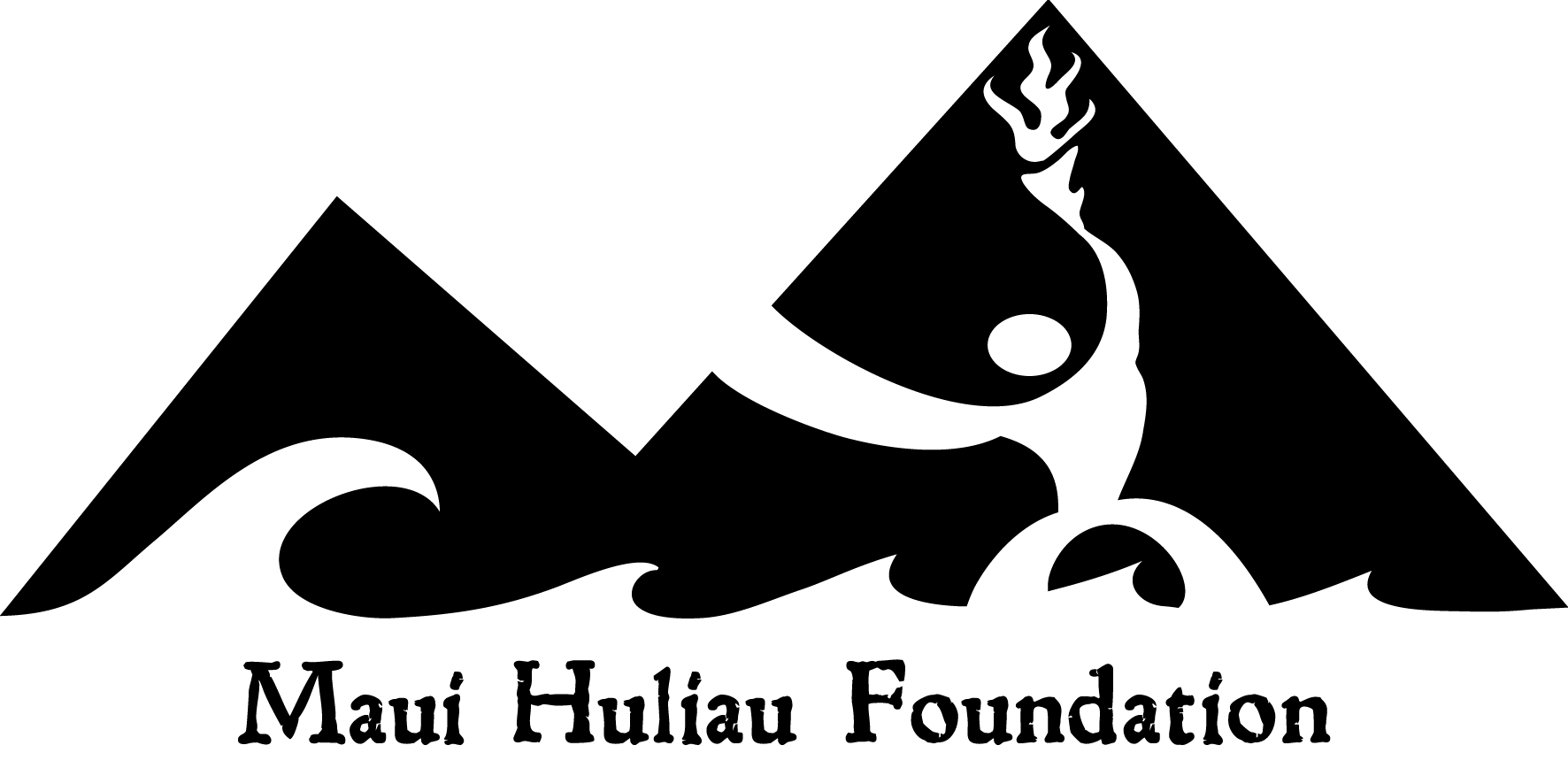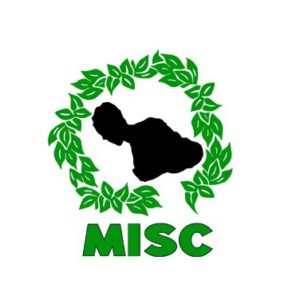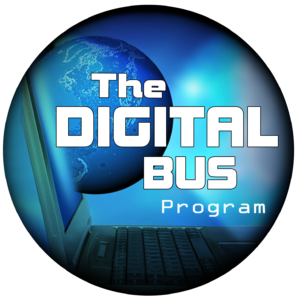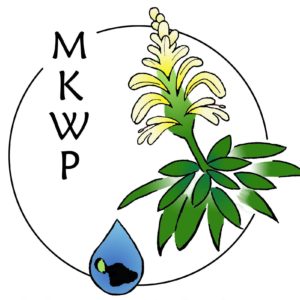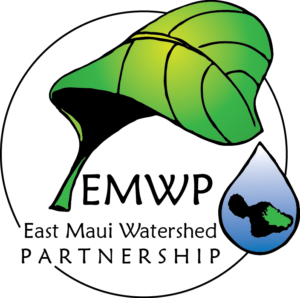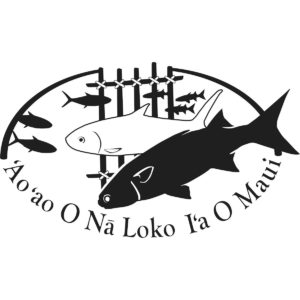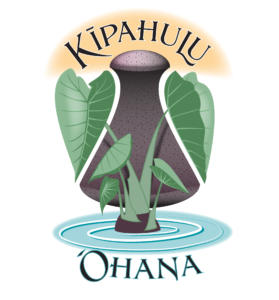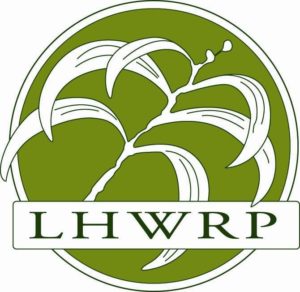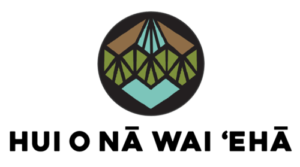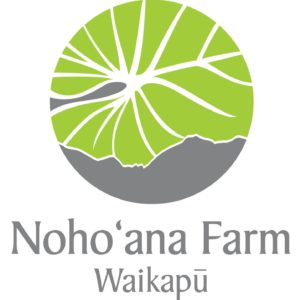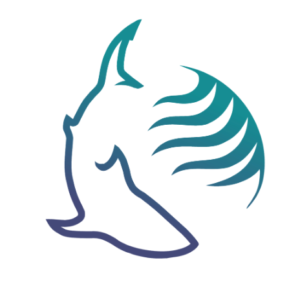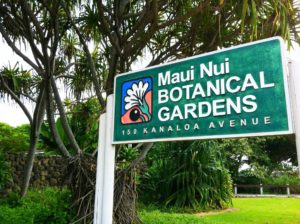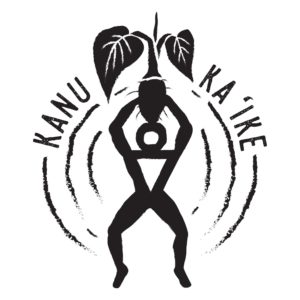Maui ʻĀina-based Community Education Resources
This page provides resources to promote community partnership and ʻāina-based learning both in the classroom and in our Maui community. Below you will find virtual huakaʻi (field trips) and activities created with program partners during the 2020-21 school year as part of our Maui Aloha ʻĀina Virtual Classroom. You will also find a list of community partners who have created films or curriculum with us, and/or who can serve as ʻāina-based education resources by providing expertise, guest speakers, lesson plans or field trips. This page also contains information on teacher professional development resources including our Kūkulu Pilina course sponsored by Office of Hawaiian Education.
Community Partner Resources
Below is a selection of our community partners who have collaborated with us on films and/or curriculum, or have ʻāina-based educational resources for grades 6-12.
Most of the activities listed under the “curriculum” tabs below have been adapted into pdf form from virtual activities created by Maui Huliau with program partners from our Maui Aloha ʻĀina virtual classroom during the 2020-21 school year. Please email info@mauihuliaufoundation.org to request answer keys for all activities. We can also provide Google Form versions of any student worksheets upon request.
Virtual Huakaʻi
These 12 virtual huakaʻi (field trip) videos were created with community partners by our Huliau Filmmaking Students during the 2020-21 school year. These huakaʻi videos are included in the “Videos” tabs below, but you can also watch these videos on our Virtual Huakaʻi YouTube playlist.
- Maui Invasive Species Comittee
- Curriculum
- Videos
- Additional Resources and Information
- Contact Information
The Maui Invasive Species Committee (MISC) is a project of the University of Hawaiʻi- Pacific Cooperative Studies Unit. The committee is a voluntary partnership of government, private and non-profit organizations, and concerned individuals working to prevent, control, or eliminate the most threatening invasive plant and animal species to protect Maui’s watersheds, ecological resources, agriculture, and community.
Maui Aloha ʻĀina Classroom curriculum:
Below are a couple of activities related to invasive species management from the Waiheʻe Ridge Trail unit. The complete unit is listed under Mauna Kahālāwai Watershed Partnership:
Hawaiis Most Invasive Species: Students explore the Global Invasive Species (online) Database and learn about invasive species that are commonly found across Hawaii.
Whats Growing in Your Yard?: Students choose two plants found in their yard (or anywhere nearby) and investigate whether or not they are a threat to native species.
MISC also implements and promotes the Hōʻike o Haleakalā curriculum, which you can read more about in the Additional Resources tab.
Tiny Invaders is about Maui Invasive Species Committee’s battle against invasive coqui frogs introduced to Hawaiʻi from Puerto Rico. The film includes interviews with staff on the impacts of these tiny creatures and and up-close look at eradication efforts. It was filmed and edited in 2013 by two students in Maui Huliau’s filmmaking program.
This film tells the story of Maui Invasive Species Committee’s efforts to combat the invasive miconia plant in east Maui. The film was filmed and edited by King Kekaulike student Kawelu Blando-Kaʻaihue in 2013 as part of Maui Huliau’s filmmaking program.
MISC implements and promotes the Hōʻike o Haleakalā curriculum, a place-based curriculum designed to engage students in the study of the native Hawaiian ecosystems.
Each lesson, game, and group activity relates to State of Hawai’i science standards. Lessons can be taught singly or together, as an entire semester-long course.
Hō’ike o Haleakalā is divided into five modules. Four cover discrete ecosystems on Haleakalā, from mauka to makai. The fifth module covers invasive species, which affect all ecosystems.
This curriculum is currently online and free to use at https://www.hoikecurriculum.org/
We also schedule presentations in-person and virtually for many of its lessons.
Group activities are on hold for now but may eventually resume.
The Digital Bus offers mobile science and technology classrooms to supplement the curriculum for the students of Maui and Moloka`i. We aim to promote STEM education, Ike Hawai’i, and critical thinking skills. The Digital Bus offers various field trip opportunities for K-12 students focusing on environmental education, marine biology, and various STEM topics. Programs are free to public schools.
Maui Aloha ʻĀina Classroom curriculum:
View/download the curriculum HERE!
The first page of the pdf contains a brief overview of all activities. This unit also includes a virtual huakaʻi to Keālia Pond National Wildlife Refuge created by our filmmaking students.
This virtual huakaʻi to Keālia Pond National Wildlife Refuge was created by three students in our Fall 2020 Huliau Environmental Filmmaking Club. The video explores the importance of wetland habitats, and the native plants and animals that reside in Keālia. This huakaʻi also features students engaging in hands-on STEM activities at the refuge with Alakaʻina Maui Digital Bus.
- Online curriculum or activities
- Physical teaching supplies or posters
- In-person classroom presentations and/or activities
- Virtual presentations and/or activities
Until social distancing rules are lifted, we are currently offering three virtual projects: Hawai’i: A Natural History, Manō: Sharks of Hawai’i, and Kilo: Let’s Observe. These projects include in-person QA sessions for schools that are currently permitting guest speakers. Once we are fully back to normal operations, The Digital Bus will once again offer various field trip opportunities for K-12 students focusing on environmental education, marine biology, and various STEM topics. Programs are free to public schools.
- Mauna Kahālāwai Watershed Partnership
- Curriculum
- Videos
- Additional Resources and Information
- Contact Information
Our goal is to protect Mauna Kahālāwai’s forested watersheds, native ecosystems, and freshwater supply through collaborative forest management. We build fences to exclude feral ungulates, control invasive species that choke out native forests, monitor watershed health, and conduct public outreach and education.
Maui Aloha ʻĀina Classroom curriculum:
View/download our curriculum HERE!
The first page of the pdf contains a brief overview of all activities. This unit also includes a virtual huakaʻi to Waiheʻe Ridge Trail, created by three of our spring 2021 Huliau Environmental Filmmaking Club.
This virtual huakaʻi to Waiheʻe Ridge Trail was created by three students in our Spring 2021 Huliau Environmental Filmmaking Club in partnership with the Mauna Kahālāwai Watershed Partnership and Leeward Haleakalā Watershed Restoration Partnership and accompanies the activites shared under the “curriculum” tab.
- In-person classroom presentations and/or activities
- Virtual presentations and/or activities
- Volunteer stewardship hikes
This organization is open to hosting student groups on-site.
Website: https://www.maunakahalawai.org/
- Kaho'olawe Island Reserve Commission (KIRC)
- Curriculum
- Videos
- Additional Resources and Information
- Contact Information
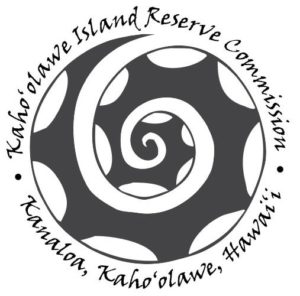 The mission of the KIRC is to implement the vision for Kaho’olawe, where the kino (physical form) of Kanaloa is restored, and na po’e Hawaiʻi (people of Hawai’i) care for the land. The KIRC fulfills its mission by providing safe and meaningful access to Kaho’olawe and its many resources for traditional and cultural practices of the Native Hawaiian people, and to undertake the restoration and revitalization of the island and its waters.
The mission of the KIRC is to implement the vision for Kaho’olawe, where the kino (physical form) of Kanaloa is restored, and na po’e Hawaiʻi (people of Hawai’i) care for the land. The KIRC fulfills its mission by providing safe and meaningful access to Kaho’olawe and its many resources for traditional and cultural practices of the Native Hawaiian people, and to undertake the restoration and revitalization of the island and its waters.
Maui Aloha ʻĀina Classroom curriculum:
View/download the curriculum HERE!
The first page of the pdf contains a brief overview of all activities.
This film was made by students in Maui Huliau Foundation’s Huliau Environmental Filmmaking Club in 2014. Filmed by students during a four day trip to Kahoʻolawe, this film outlines the history of environmental degradation on the island, the restoration efforts of Kahoʻolawe Island Reserve Commission and the role of a county-funded solar installation in making the island more sustainable. Filmed & Edited by Bernardo Buenrostro, Kaulana Pu’u and Dylan Falces.
- Online curriculum or activities
- Physical teaching supplies or posters
- In-person classroom presentations and/or activities
- Virtual presentations and/or activities
- Huaka’i to Kaho’olawe for Professional Development
This organization is open to hosting student groups on-site.
Maggie Pulver, Public Information and Outreach Specialist
Email: margaret.pulver@hawaii.gov
Website: https://www.kahoolawe.hawaii.gov/home.php
- East Maui Watershed Partnership
- Curriculum
- Videos
- Additional Resources and Information
- Contact Information
The East Maui Watershed Partnership (EMWP) is a conservation organization that is committed to protecting the watershed from degradation by promoting native forest health and their component native species. We offer a variety of community programs to help fit different needs from presentations, hikes, and volunteer trips. Topics can range from adaptive radiation, native and invasive species, watershed function and management, and careers.
Maui Aloha ʻĀina Classroom curriculum:
View/download our curriculum HERE!
The first page of the pdf contains a brief overview of all activities. This curriculum was created in partnership with East Maui Watershed Partnership, The Nature Conservancy, and Maui Forest Bird Recovery Project. This unit also features a virtual field trip video to The Nature Conservancy’s Waikamoi Preserve created by our filmmaking students.
Join students Zoe Mounts, Bailee Hughes, and Elsie Jeffers as they share about watersheds, native forests and the beauty and significance of the birds, trees and plants found in The Nature Conservancy’s Waikamoi Preserve on Maui, the largest intact native forest preserve in Hawaiʻi. To learn more, visit www.nature.org/hawaii. The video accompanies the activities under the “curriculum” tab.
- Online curriculum or activities
- In-person classroom presentations and/or activities
- Virtual presentations and/or activities
- Volunteer Trips and Interpretive Hikes
Contact us about how to get involved with our annual juried Maui Nui native species art exhibit at the Hui. Open to all ages.
This organization is open to leading student group hikes/activities etc.
Allison Borell, Community Outreach and Education Liaison
Email: pr@eastmauiwatershed.org
Website: https://eastmauiwatershed.org/
We’re a statewide land conservancy committed to “protecting the lands that sustain us” across Hawai‘i Nei. Currently, we have 17,500+ conservation acres under our protection on Hawai‘i island, Maui, Moloka‘i, O‘ahu, and Kaua‘i.
Lokahi, the Hawaiian term for “collaboration” represents the founding principle of Hawaiian Islands Land Trust. Over the years, the hard work and good intentions of land trusts across the State accomplished great things. For more than two decades these organizations worked to protect our natural and cultural treasures. They engaged volunteers, motivated donors and worked to preserve the heritage that is uniquely Hawaiian. Among them, they have successfully protected coastal areas, working ranches and agricultural lands, wildlife habitats, watersheds, park and recreation areas and Hawaiian cultural sites.
Maui Aloha ʻĀina Classroom curriculum:
View/download the curriculum HERE!
The first page of the pdf contains a brief overview of all activities. This unit also includes a virtual huakaʻi video to Waiheʻe Refuge which was created by three students in our Fall 2020 Huliau Environmental Filmmaking Club.
This virtual huakaʻi to Waiheʻe Coastal Dunes and Wetland Refuge on Maui was created by three students in our Fall 2020 Huliau Environmental Filmmaking Club in partnership with the Hawaiian Islands Land Trust. This accompanies the activities listed under the curriculum tab.
You can visit the HLT website for more educational videos and activities HERE!
Denby Freeland, Waiheʻe Refuge Education Coordinator – Hawaiʻi Land Trust
Website: https://www.hilt.org/
Phone: (808)744-2462
Email: denby.freeland@hilt.org
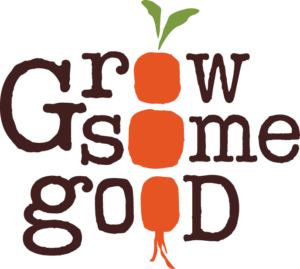 Grow Some Good cultivates a healthy community by strengthening local agriculture and improving access to nutritious, affordable food. Our Farm to School Program creates garden-based education experiences that connect Maui’s keiki to their food, environment, and culture. We envision a food-secure community where everyone grows, shares, and prepares healthy local food.
Grow Some Good cultivates a healthy community by strengthening local agriculture and improving access to nutritious, affordable food. Our Farm to School Program creates garden-based education experiences that connect Maui’s keiki to their food, environment, and culture. We envision a food-secure community where everyone grows, shares, and prepares healthy local food.
We offer FREE online courses related to in-school gardens and composting. Visit our education page HERE!
Click here to learn about our programs.
If you are interested in participating in our Kumu Mea Kanu Garden Kit Program, please complete this form. https://airtable.com/shr1eGUyHlSs7rboB .
Students are typically engaged in on-site outdoor learning school gardens. If you wish to start a school garden or obtain support for your existing one, please contact us to discuss the possibilities.
- Maui Forest Bird Recovery Project
- Curriculum
- Videos
- Additional Resources and Information
- Contact Information
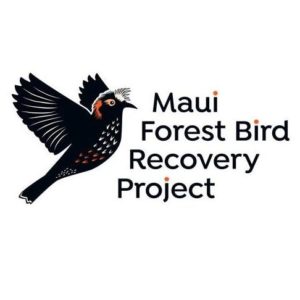 Maui Forest Bird Recovery Project (MFBRP) is driven by science and dedicated to the conservation of Hawaiʻi’s native forest ecosystems. Formed in 1997, our mission is to develop and implement techniques that recover Maui’s endangered forest birds and to restore their habitats through research, development, and application of conservation techniques.
Maui Forest Bird Recovery Project (MFBRP) is driven by science and dedicated to the conservation of Hawaiʻi’s native forest ecosystems. Formed in 1997, our mission is to develop and implement techniques that recover Maui’s endangered forest birds and to restore their habitats through research, development, and application of conservation techniques.
Maui Aloha ʻĀina Classroom:
In this activity, students will participate in a virtual birdwatch using footage taken by Maui Forest Bird Recovery Project. They will start by watching the first 2.5 minutes of this YouTube video while paying attention to the physical characteristics of the six native Maui forest birds. They will then identify each bird from the video clips and answer questions about them.
*Created as part of the Waikamoi Unit listed under East Maui Watershed Partnership
This is not a Huliau student-made film but provides a great overview of MFBRP’s work and the native birds they help protect. This video is also used in the Waikamoi Virtual Birdwatch listed under the “curriculum” tab.
“Maui Forest Bird Recovery Project is dedicated to the recovery of Maui’s native forest birds, the Hawaiian Honeycreepers. Learn more about the birds and the work that we do to help them.”
- Online curriculum or activities,
- Virtual presentations and/or activities
Group activities are on hold for now but may eventually resume.
Rachel Kingsley, Hawaiian Forest Bird Education and Outreach Associate
Email: rachel@mauiforestbirds.org
Website: https://mauiforestbirds.org/
ʻAoʻao O Nā Loko Iʻa O Maui is a non-profit 501(c)(3) organization that has dedicated itself to revitalizing Kōʻieʻie Fishpond in South Maui, Hawai`i for educational, archaeological, cultural and recreational purposes. We feel that this fishpond is a symbol of the Hawaiian culture and history. Therefore, it must be preserved as a monument to Hawai`i’s past and an icon for the future. It is a cultural landmark tucked away in the growing community of Kihei in South Maui where many are unaware of its significance. ʻAoʻao O Nā Loko Iʻa O Maui is working to change this. We are working with the community to bring the historical and cultural life back to a land-mark which has been living quietly for too long.
Maui Aloha ʻĀina Classroom curriculum:
View/download the curriculum HERE!
The first page of the pdf contains a brief overview of all activities. This unit also includes a virtual huaka’i video to Kōʻieʻie Fishpond and the Hawaiian Islands Humpback Whale National Marine Sanctuary which was created by three students in our Fall 2020 Huliau Environmental Filmmaking Club.
This virtual huakaʻi to Kōʻieʻie Fishpond and the Hawaiian Islands Humpback Whale National Marine Sanctuary in Kīhei was created by three students in our Fall 2020 Huliau Environmental Filmmaking Club in partnership with the ʻAoʻao o nā Loko Iʻa o Maui and NOAA’s HIHWNMS staff. This video accompanies the activities listed under the curriculum tab.
ʻAoʻao O Nā Loko Iʻa O Maui is not currently hosting service groups.
Website: https://mauifishpondassociation.org
Phone: (808)359-1172
Kīpuka Olowalu is an organization seeking to preserve the Native Hawaiian cultural site, the Olowalu valley, located on the island of Maui. The Kīpuka Olowalu team is driven to accentuate the relationship between humans and the environment through long standing native Hawaiian cultural knowledge, and passing said knowledge on to future generations. The root of this organization comes with the betterment of education efforts to impose community resilience. The team upholds this mission through our core values: Kūpono, mālama, kōkua, and aloha.
Maui Aloha ʻĀina Classroom curriculum:
View/download the curriculum HERE!
The first page of the pdf contains a brief overview of all activities. This unit also includes a brief history of Olowalu, a virtual huakaʻi video, and activities relating to coral health.
This virtual huakaʻi created by three of our spring 2021 filmmaking students explores the Olowalu ahupuaʻa of West Maui from mauka to makai. The students share the importance of Olowalu’s fringing reef and how the restoration work being done by Kīpuka Olowalu helps to protect the reef, while restoring the area’s natural and cultural heritage. This video accompanies the activities listed under the curriculum tab.
Website: https://www.kipukaolowalu.com/
Mailing Address: P.O Box 1413, Wailuku, HI 96793
Email: info@kipukaolowalu.com
The Kīpahulu ‘Ohana is dedicated to the cultural sustainability of the Kīpahulu moku on the island of Maui, Hawai‘i, through ahupua’a education and restoration programs which incorporate local, national and international partnerships and projects. We envision families working in harmony together to preserve and restore the traditional cultural practices of the Hawaiian people, enhanced with appropriate science and technology. We conduct cultural demonstrations, restoration projects, self-sufficiency programs, biodiversity projects, and other related endeavors from the mountain to the sea.
Maui Aloha ʻĀina Classroom curriculum:
View/download the curriculum HERE!
The first page of the pdf contains a brief overview of all activities. This unit also includes a virtual huakaʻi created by students from Hāna School.
This virtual huakaʻi created by students from Hāna School explores the Kīpahulu moku of East Maui. The students visit Kapahu Living Farm and interview the founders Uncle John and Aunty Tweetie Lind of Kīpahulu ʻOhana. The film also shares more about Kīpahulu ʻOhana’s Mālama I Ke Kai programs including the ʻopihi rest area and plans to create a Community-Based Subsistence Fishing Area (CBSFA). This film accompanies the activities listed under the curriculum tab.
Website: https://kipahulu.org/
Phone: (808)248-8673
Email: ohana@kipahulu.org
Mailing Address: PO Box 454, Hana, HI 96713
The Leeward Haleakalā Watershed Restoration Partnership (LHWRP) is a coalition formed in June 2003, by 11 private and public landowners and supporting agencies.
The 43,175-acre partnership’s goal is to restore dryland forests on Maui island, on the leeward slopes of Haleakalā from Makawao through ‘Ulupalakua to Kaupō between 3,500 and 6,500 feet elevation.
Maui Aloha ʻĀina Classroom curriculum:
- Leeward Haleakalā Watershed Restoration Project: Stories From the Field*- Maui’s dryland forest found on the leeward slopes of Haleakalā are home to unique native species. In this activity, Leeward Haleakalā Watershed Restoration Partnership staff share stories about their work and the unique dryland forest species they help to protect. Click on the blue link above to access the activity.
*This activity is part of the Waiheʻe Ridge Trail unit listed under Mauna Kahālāwai Watershed Partnership.
This film was made by Maui students ages 12-18 in our Huliau Environmental Filmmaking Club during the 2016-17 school year. This documentary film funded by the Maui County Office of Economic Development shares the important work being done by the Leeward Haleakalā Watershed Restoration Project to protect and restore the rare native plants and ecosystems of Maui’s leeward watersheds.
Website: https://www.lhwrp.org/
Email: admin@lhwrp.org
Phone: (808)573-8989
Mailing Address: PO Box 1056, Makawao, HI 96768
In 2003, Hui o Nā Wai ‘Ehā was established and determined to address the negative impacts caused by the dewatering of Nā Wai ‘Ehā Streams by Sugar Plantations and corporate water companies. As a Native Hawaiian organization, Hui o Nā Wai ʻEhā believes that the health of our streams is a direct reflection of the health of our lāhui and existing communities. A major component of our lāhui’s demise is due to the vast changes in our food systems and relationship to ʻāina, both of which are directly tied to the loss of our stream water resources and ancestral kuleana agricultural lands.
Maui Aloha ʻĀina Classroom curriculum:
View/download the curriculum HERE!
This unit covers the history of water use and the battles over water rights in the Nā Wai ʻEhā region of Maui. The first page of the pdf contains a brief overview of all activities.
Additional films that accompany student activities are embeded in the pdf under the curriculum tab.
If you would like to learn more, this video by Ka Maka Koʻi, provides a great overview of the legal history, goes more into depth about the East Maui Irrigation ditch system, and touches on similar issues on the other Hawaiian islands.
The film below was created by Huliau alumni in 2020. Skippy Hau, an aquatic biologist with the State of Hawaiʻi Division of Aquatic Resources, who has studied native stream life for over 35 years, tells us about more about how changes in streamflow have impacted native stream species in Wailuku River (also known as ʻĪao Stream).
This short film created by Huliau filmmaking students in 2015 uses contrasting images from the past to tell the story of the on-going battle over water diverted from West Maui’s four famous streams known as Nā Wai ʻEhā.
**Water Nation is a documentary film from our very first filmmaking program in 2010 about the ongoing controversy over the diversion of the famous West Maui streams known as Na Wai ʻEhā (“The Four Waters”). Students tell the story of how these diversions came to be, and of the ongoing battle to restore their natural flow. As part of the film, students interviewed community members living in the Na Wai ʻEhā area. This film was researched, filmed, and edited by three middle and high school students from Maui as part Maui Huliau Foundation’s Huliau Environmental Filmmaking club.
**Note: Because this film is 12 years ago, some information shared will be very outdated.
Part 1 of 2
Part 2 of 2
Website: https://www.huionawaieha.org/
Email: huionawai4@gmail.com
Mailing Address: 213 West Waikō Rd, Waikapū, HI 96793
Nohoʻana Farm is a small family owned organic farm situated on 2 acres of kuleana land in Waikapū, Maui. The farm traditionally cultivates kalo through an ancient loʻi kalo agricultural system fed by the fresh waters of the Waikapū Stream as well as produces other Hawaiian food crops. Noho’ana Farm has developed a bilingual ‘āina-based (place-based) education program designed to engage children to adults in the importance of traditional Hawaiian agriculture and food preparation, ethnobotanical uses of native plants and water resource management – all within a cultural landscape
Maui Aloha ʻĀina Classroom curriculum:
View/download the curriculum HERE!
The first page of the pdf contains a brief overview of all activities. This unit also includes an introductory video, Nohoʻana Farm Huakaʻi, a “kuʻi ʻai” or kalo pounding demonstration video, and activities surrounding the importance of kalo, wahi (place), and kilo ʻāina (observing nature).
This virtual huakaʻi to Nohoʻana Farm in Waikapū on Maui was created by Huliau alumnae Kiana Liu and Sophia Domingo in partnership with Hōkūao Pellegrino and Nohoʻana Farm. This video accompanies the activities listed under the curriculum tab.
Website: https://www.nohoanafarm.com/
Phone: (808)-430-4534
Email: nohoanafarm@gmail.com
Address: 213 Waikō Road, Waikapū, HI 96793
Maui Aloha ʻĀina Classroom curriculum:
View/download the curriculum HERE!
The first page of the pdf contains a brief overview of all activities. This unit also includes a virtual huakaʻi video to Ka’ehu created by our filmmaking students.
In this virtual huakaʻi created by our spring 2021 Huliau Environmental Filmmaking Club students, we learn about the region of Kaʻehu in Wailuku, Maui, and the organization that cares for this special place and runs educational programs here. This video accompanies the activities listed under the curriculum tab.
This short documentary film created in 2018 features the work being done by a partnership of community groups to restore 64 coastal acres in Kaʻehu and use the area for various community-based cultural and educational projects. By Bryce Clearing Sky, Jaden Kreutner and Kaʻimi Kaleleiki
Website: https://www.kaehu.org/
Phone: (808)856-6679
Email: events@kaehu.org
Physical Address: 600 Kukona Road #E, Wailuku, HI 96793
Since Maui Ocean Center opened in 1998, we have worked to protect Hawai‘i’s remarkable marine life. We offer unparalleled encounters with amazing oceanic creatures, some of which exist only here in Hawai‘i. We care for one of the world’s largest collections of live Pacific corals. Our exhibits and educational programs are designed to inspire Hawai‘i residents and visitors with fresh appreciation for our surrounding sea and local culture.
Maui Aloha ʻĀina Classroom curriculum:
View/download the curriculum HERE!
The first page of the pdf contains a brief overview of all activities. This unit also includes a virtual huaka’i film created by our filmmaking students. The film highlights the biology of coral, the importance of coral reefs, current threats impacting coral reefs, and how you can help protect these ecosystems.
This virtual huakaʻi to Maui Ocean Center in Maʻalaea was created by three students in our Fall 2020 Huliau Environmental Filmmaking Club. The video explores the importance of coral reefs and the threats that they face. It accompanies the activities listed under the curriculum tab.
Guided student tours are available on request. Call (808)270-7000 to make arrangements before your visit.
Website: https://mauioceancenter.com/
Phone: (808)270-7000
Address: 192 Maʻalaea Road, Wailuku, HI 96793
Email: aloha@mauioceancenter.com
Maui Nui Botanical Gardens (MNBG) is dedicated to the protection of Maui Nui’s rich native plants and cultural heritage. By collecting, cultivating, and distributing native and Polynesian-introduced plants MNBG provides people with a gathering place to see and understand the important relationship these plants have to our economic, social, and cultural livelihoods.
Maui Nui Botanical Gardens welcomes you to come and explore our collection, talk with the staff, and learn about our environmental and cultural heritage.
Maui Aloha ʻĀina Classroom curriculum:
View/download the curriculum HERE!
The first page of the pdf contains a brief overview of all activities. This unit also includes a virtual huakaʻi video to Maui Nui Botanical Garden (MNBG) in Wailuku which was created by three students in our Fall 2020 Huliau Environmental Filmmaking Club.
In this virtual huakaʻi to Maui Nui Botanical Gardens in Kahului was created by students in our Fall 2020 Huliau Environmental Filmmaking Club, students share about native and Polynesian-introduced plants and their uses. This video accompanies the activities shared under the curriculum tab.
Website: https://mnbg.org
Phone: (808)249-2798
Hours of Operation: 8am-4pm, Tuesday through Saturday
Admission: Members- FREE, General $10, Kamaʻāina (with Hawaii State ID) & Keiki under 12- Free
Kanu Ka ʻIke is a family owned and operated entity with a vast network of community and professional support. KKI continues to grow and expand our services in perpetuity and conjunction to respond on our mission to “Plant knowledge in the form of culture, health, education and mana” to our community. Our ʻOhana has been actively servicing our community since 2010.
Maui Aloha ʻĀina Classroom curriculum:
View/download the curriculum HERE!
The first page of the pdf contains a brief overview of all activities. This unit also includes a virtual huakaʻi created by our filmmaking students to the Polynesian Agroforestry site managed by Kanu Ka ʻIke at Hōkūnui farm in Piʻiholo.
This virtual huakaʻi is created by four of our spring 2021 filmmaking students. In this huakaʻi film, students visit Kanu Ka ʻIke’s “Poly-Forestry” (Polynesian Agroforestry) project at Hōkūnui farm in Piʻiholo where they learn more about “ʻOhana-style planting” and how, just like plants in a forest, we each have an important role to play in our community. This film accompanies the activities listed under the curriculum tab.
Kanu Ka ʻIke has hosted student groups and educational programs in the past, but please contact them for the current status on their programs.
Website: https://kanukaike.com/
Email: kanukaike@gmail.com
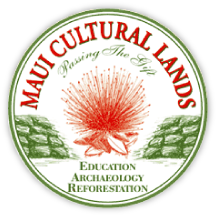 Maui Cultural Lands is a Maui-based grassroots land trust organization whose mission is to stabilize, protect, and restore Hawaiian cultural resources. We are an aina based organization that shares culture, history, & science through the simple process of invasive species mitigation and native plant propagation within a dense archaeological site located in Honokowai Valley.
Maui Cultural Lands is a Maui-based grassroots land trust organization whose mission is to stabilize, protect, and restore Hawaiian cultural resources. We are an aina based organization that shares culture, history, & science through the simple process of invasive species mitigation and native plant propagation within a dense archaeological site located in Honokowai Valley.
- Online curriculum or activities
- In-person classroom presentations and/or activities
- Virtual presentations and/or activities
- Field volunteer work
This organization is open to hosting student groups.
“We share an awesome experience that fills participants with Aloha ʻāina.”
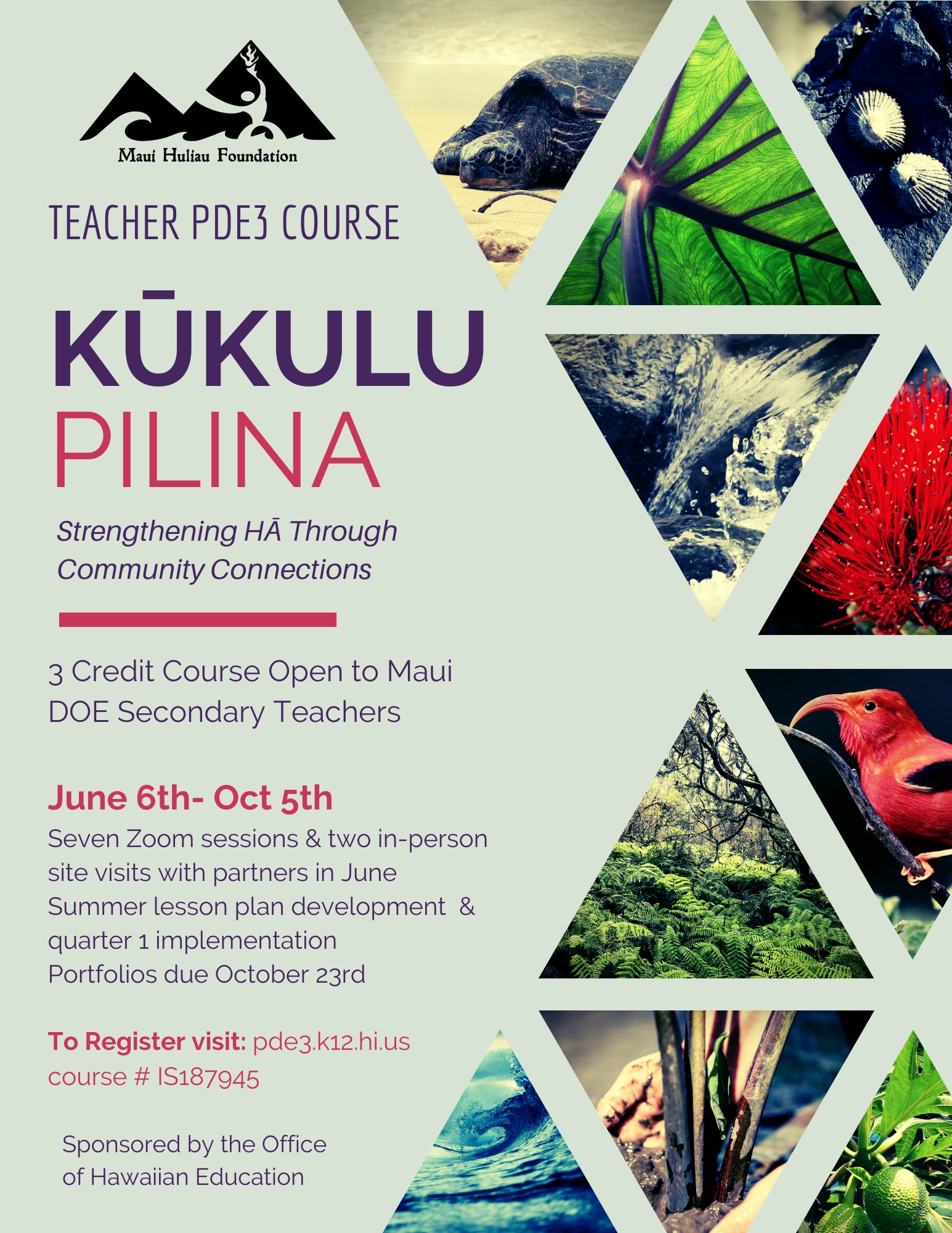
Kūkulu Pilina Teacher PDE3 Course
We are thrilled to announce that our expanded Kūkulu Pilina PDE3 course for Maui DOE secondary teachers is back in summer 2023! This course uses many of the resources created with community partners for our Maui Aloha ʻĀina Virtual Classroom during the 2020-21 school year.
The purpose of this course is to help Maui educators realize the potential for community partnership and ʻāina-based education to deepen their students’ sense of HĀ through ʻāina aloha practices contextualized to their particular place and community.
The course is sponsored by the Office of Hawaiian Education and includes seven online and two in-person sessions taught alongside community partners. Registration is open until June 2nd on the PDE3 site.
